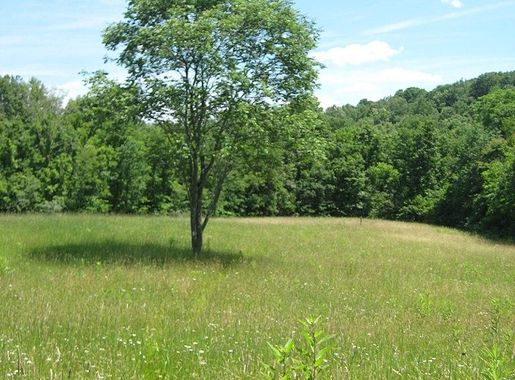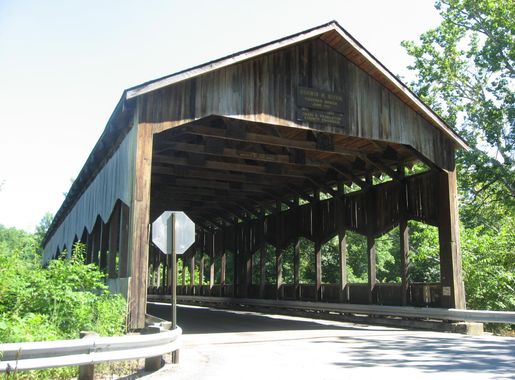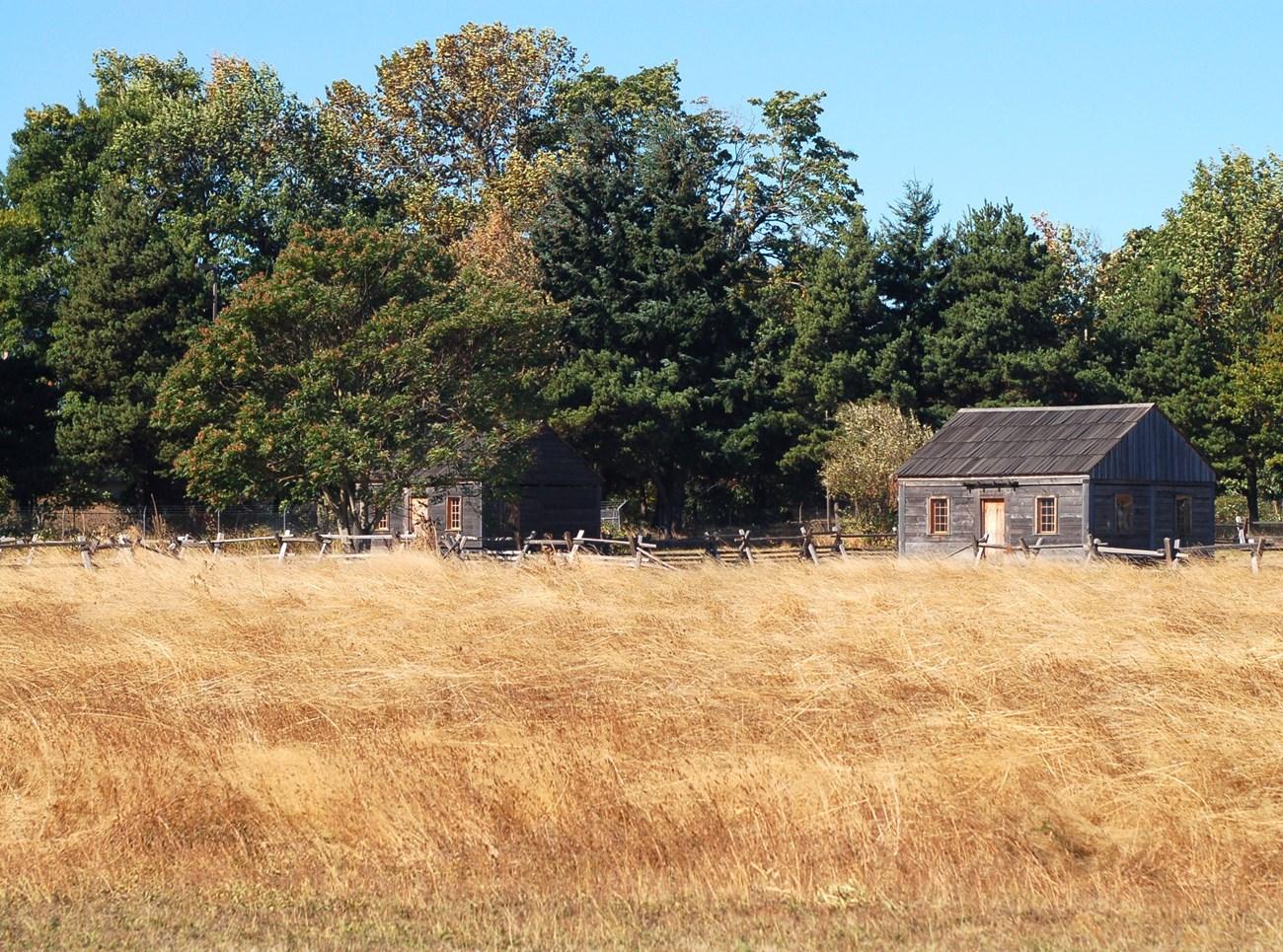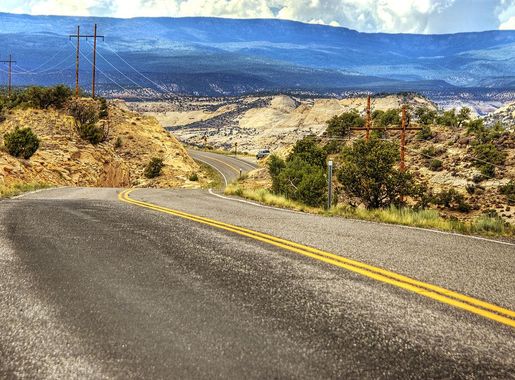
Wayne National Forest: Ohio’s Hidden Natural Gem
Discover the natural beauty and diverse outdoor activities of Wayne National Forest, Ohio's only national forest, offering a serene escape for hiking, camping, and wildlife spotting.
Wayne National Forest is a sprawling natural wonder located in the southeastern part of Ohio. Spanning over 240,000 acres, it is the only national forest in Ohio and offers a diverse array of landscapes, from rolling hills to dense woodlands and serene lakes. The forest is divided into three main sections: Athens, Marietta, and Ironton, each offering unique experiences for visitors. Hiking enthusiasts will find an extensive network of trails catering to all skill levels. The forest is home to over 300 miles of trails, including the popular Wildcat Hollow Trail, which offers a 15-mile loop through some of the most scenic parts of the forest. For those looking to explore on two wheels, there are ample opportunities for mountain biking. Wayne National Forest is also a haven for wildlife. Visitors may spot white-tailed deer, wild turkeys, and a variety of bird species as they traverse the forest. Fishing and boating are popular activities on the forest’s many lakes and rivers, with Lake Vesuvius and the Ohio River being notable spots for water-based recreation. Camping is a beloved activity here, with numerous campgrounds offering both primitive and developed sites. Whether you prefer a back-to-basics experience or a campsite with amenities, Wayne National Forest has something to suit your needs. The forest's rich history and cultural heritage add another layer of interest, with several historical sites and remnants of past settlements to explore. In winter, the forest transforms into a snowy wonderland, perfect for cross-country skiing and snowshoeing. The changing seasons bring unique beauty to the forest, making it a year-round destination for nature lovers and outdoor adventurers alike.
Local tips in Wayne National Forest
- Check trail conditions before heading out, especially during the wet season, as some trails can become muddy and challenging.
- Bring bug spray, especially in the summer months, to ward off mosquitoes and ticks.
- Visit in the fall to experience the stunning foliage when the forest is ablaze with vibrant autumn colors.
- Pack plenty of water and snacks, as amenities can be sparse depending on the area you are exploring.
- If you plan to camp, make reservations early during peak seasons to secure a spot at your preferred campground.
Wayne National Forest: Ohio’s Hidden Natural Gem
Wayne National Forest is a sprawling natural wonder located in the southeastern part of Ohio. Spanning over 240,000 acres, it is the only national forest in Ohio and offers a diverse array of landscapes, from rolling hills to dense woodlands and serene lakes. The forest is divided into three main sections: Athens, Marietta, and Ironton, each offering unique experiences for visitors. Hiking enthusiasts will find an extensive network of trails catering to all skill levels. The forest is home to over 300 miles of trails, including the popular Wildcat Hollow Trail, which offers a 15-mile loop through some of the most scenic parts of the forest. For those looking to explore on two wheels, there are ample opportunities for mountain biking. Wayne National Forest is also a haven for wildlife. Visitors may spot white-tailed deer, wild turkeys, and a variety of bird species as they traverse the forest. Fishing and boating are popular activities on the forest’s many lakes and rivers, with Lake Vesuvius and the Ohio River being notable spots for water-based recreation. Camping is a beloved activity here, with numerous campgrounds offering both primitive and developed sites. Whether you prefer a back-to-basics experience or a campsite with amenities, Wayne National Forest has something to suit your needs. The forest's rich history and cultural heritage add another layer of interest, with several historical sites and remnants of past settlements to explore. In winter, the forest transforms into a snowy wonderland, perfect for cross-country skiing and snowshoeing. The changing seasons bring unique beauty to the forest, making it a year-round destination for nature lovers and outdoor adventurers alike.
When is the best time to go to Wayne National Forest?
Iconic landmarks you can’t miss
Hocking Hills State Park
Explore the breathtaking beauty of Hocking Hills State Park, Ohio's natural gem with stunning landscapes, hiking trails, and majestic waterfalls.
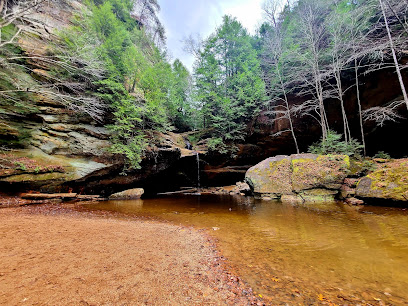
Hocking Hills State Park Visitor Center
Explore the breathtaking landscapes and outdoor adventures at Hocking Hills State Park Visitor Center, your gateway to Ohio's natural beauty.
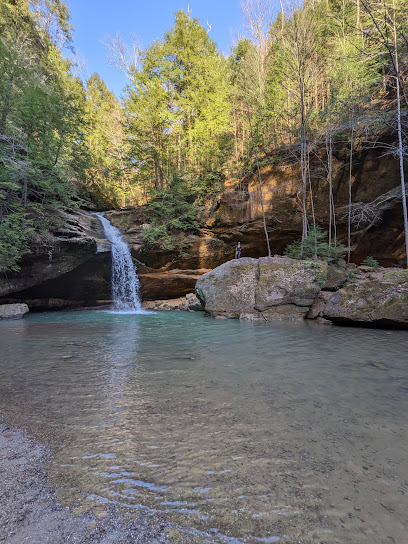
Rock House
Discover the stunning geological beauty of Rock House in Hocking Hills State Park, a top hiking destination in Ohio for nature lovers and adventure seekers.
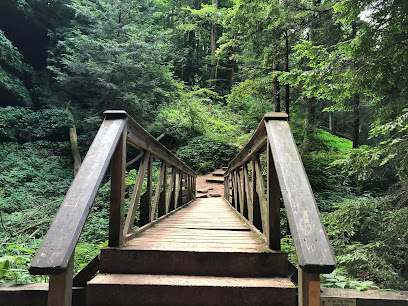
Conkles Hollow State Nature Preserve
Explore the serene beauty of Conkles Hollow State Nature Preserve, a nature lover's paradise in Ohio with breathtaking views and tranquil trails.
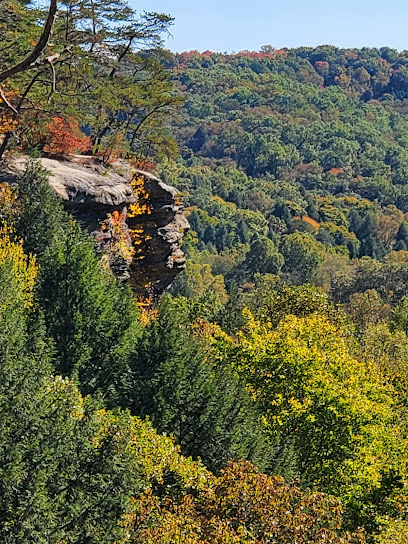
Blackhand Gorge State Nature Preserve
Experience the natural beauty of Blackhand Gorge State Nature Preserve, a serene escape in Ohio perfect for hiking, wildlife watching, and enjoying the great outdoors.
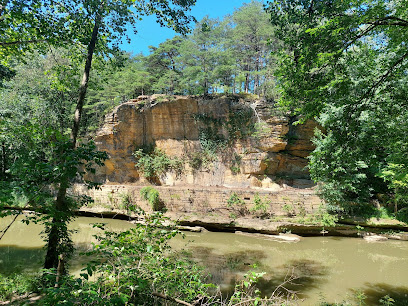
Cantwell Cliffs
Explore the breathtaking trails and stunning views at Cantwell Cliffs, a must-visit hiking area in Ohio's beautiful Hocking Hills region.
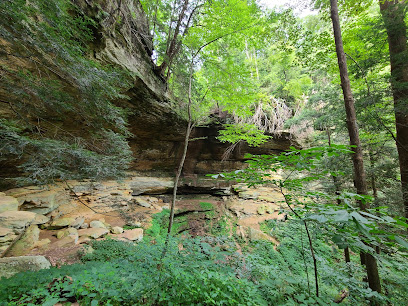
Cedar Falls
Experience the breathtaking beauty of Cedar Falls in Hocking Hills State Park, a serene oasis for nature lovers and adventure seekers alike.
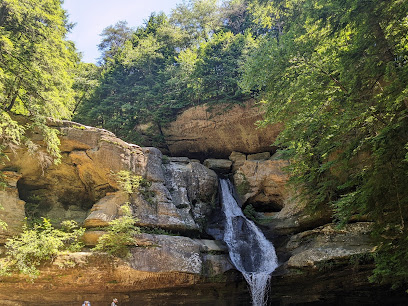
Newark Earthworks
Explore Newark Earthworks, Ohio's ancient Native American marvels showcasing incredible earthworks and rich cultural history.
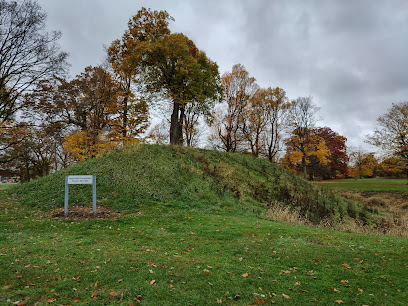
Moonville Tunnel
Discover the historic Moonville Tunnel in Ohio, an enchanting blend of nature and local lore, perfect for hiking and exploring the rich railroad history.
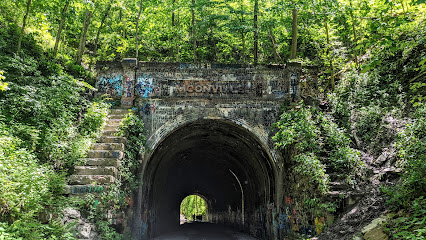
Rockbridge State Nature Preserve
Explore the breathtaking landscapes and unique rock formations at Rockbridge State Nature Preserve, Ohio's perfect haven for nature lovers and outdoor enthusiasts.
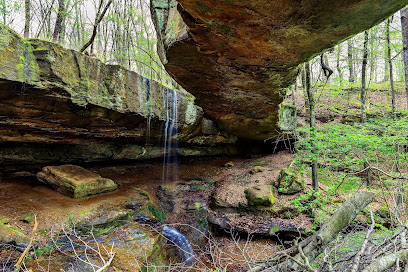
Flint Ridge State Memorial
Explore the rich history and natural beauty of Flint Ridge State Memorial, a unique historical site and state park in Ohio.
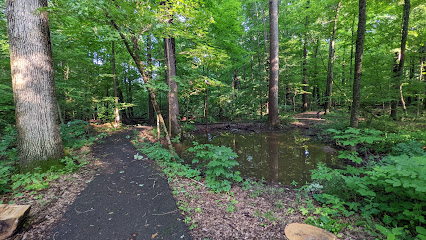
Wayne National Forest Headquarters & Athens Ranger Station
Explore the breathtaking landscapes and diverse wildlife at Wayne National Forest Headquarters, your gateway to outdoor adventures in Ohio.
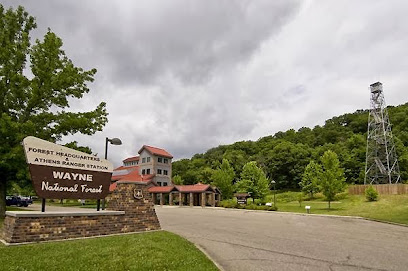
Paul A. Johnson Pencil Sharpener Museum
Discover the whimsical world of pencil sharpeners at the Paul A. Johnson Pencil Sharpener Museum in Logan, Ohio, a unique attraction for all ages.
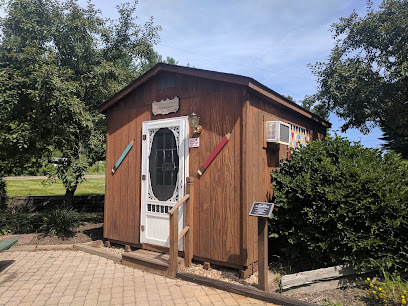
Wildcat Hollow Hiking Trail - Wayne National Forest
Discover the natural beauty of Wildcat Hollow Hiking Trail in Wayne National Forest, a perfect escape for hiking enthusiasts and nature lovers alike.
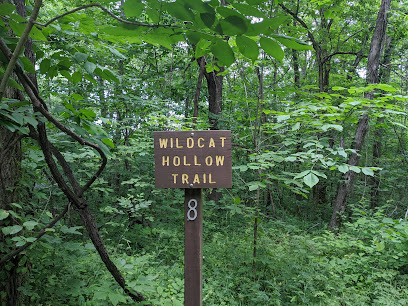
Sherman House Museum
Discover the legacy of General Sherman at the Sherman House Museum in Lancaster, Ohio—a captivating exploration of American history and culture.
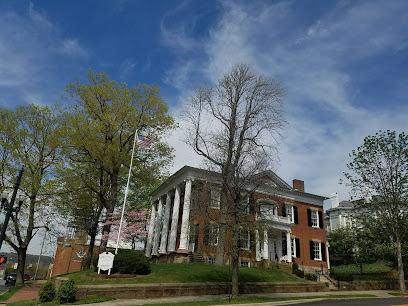
Unmissable attractions to see
Hocking Hills State Park
Discover the breathtaking landscapes and diverse hiking trails of Hocking Hills State Park, Ohio's natural gem for outdoor enthusiasts and nature lovers.

Hocking Hills State Park Visitor Center
Explore the enchanting landscapes and vibrant ecosystems at Hocking Hills State Park Visitor Center, Ohio's premier outdoor adventure destination.
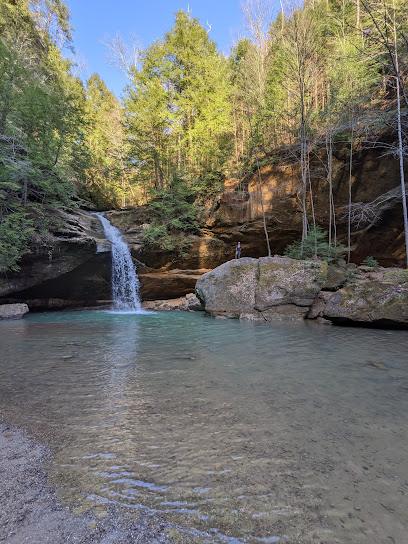
Ash Cave
Experience the breathtaking beauty of Ash Cave in Hocking Hills, a natural wonder with towering cliffs and serene hiking trails in Ohio.
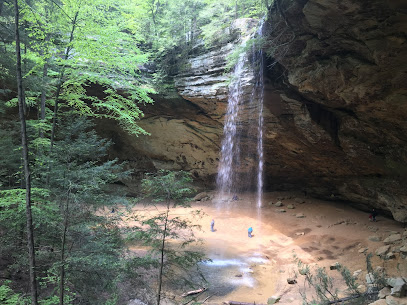
The Wilds
Experience wildlife conservation at its best at The Wilds in Ohio, where adventure and education unite in a breathtaking natural setting.
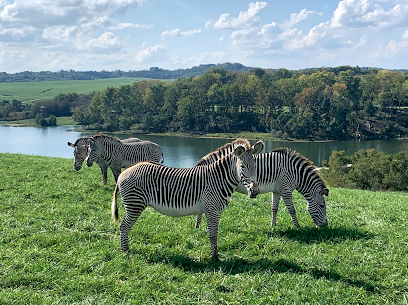
Rock House
Explore the breathtaking landscapes of Rock House, a captivating natural attraction in Hocking Hills State Park, Ohio, perfect for hiking and photography.
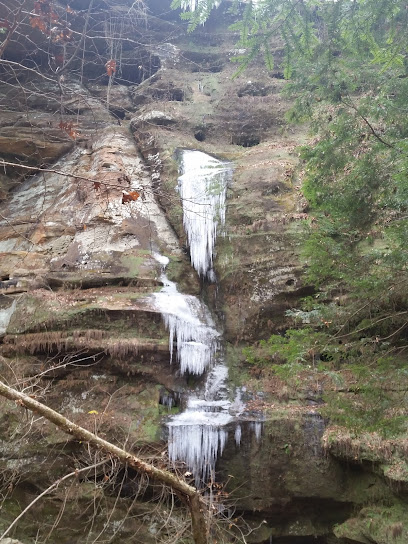
Rising Park
Discover the beauty of Rising Park in Lancaster, Ohio – a perfect blend of nature, recreation, and community spirit.
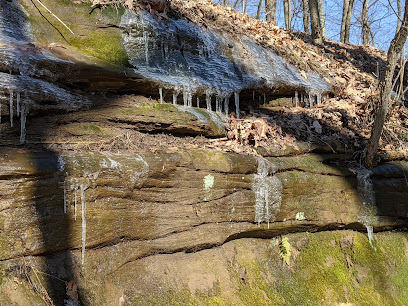
Conkles Hollow State Nature Preserve
Explore the breathtaking natural beauty of Conkles Hollow State Nature Preserve, featuring stunning cliffs and scenic hiking trails in Ohio's Hocking Hills.

Buckeye Lake State Park
Experience the beauty and adventure of Buckeye Lake State Park, a stunning destination for nature lovers and outdoor enthusiasts in Ohio.
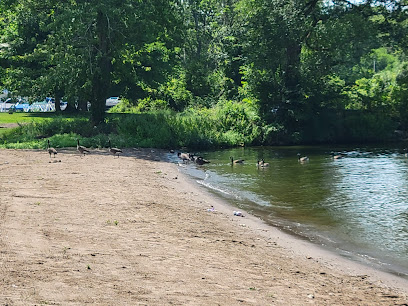
Hocking Hills Canopy Tours
Explore the beauty of Hocking Hills from above with thrilling zip-line tours and guided experiences in Ohio's stunning outdoors.
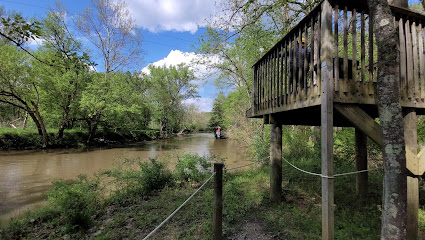
Blackhand Gorge State Nature Preserve
Explore Ohio's breathtaking landscapes and rich biodiversity at Blackhand Gorge State Nature Preserve, a perfect destination for outdoor enthusiasts.
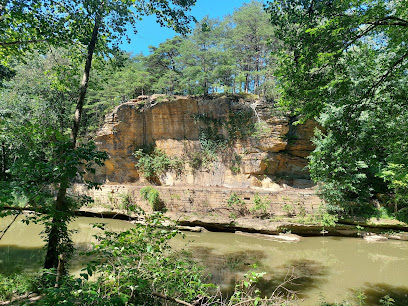
Cantwell Cliffs
Discover the breathtaking beauty of Cantwell Cliffs, a premier hiking destination in Ohio's Hocking Hills, where adventure meets tranquility amidst stunning landscapes.
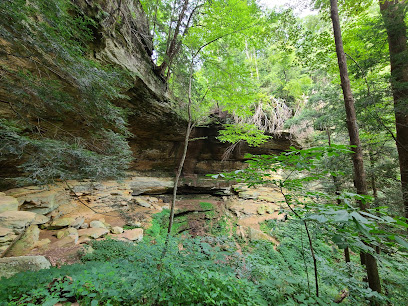
Cedar Falls
Explore Cedar Falls in Hocking Hills for breathtaking waterfalls, scenic hikes, and unforgettable natural beauty in Ohio's wilderness.
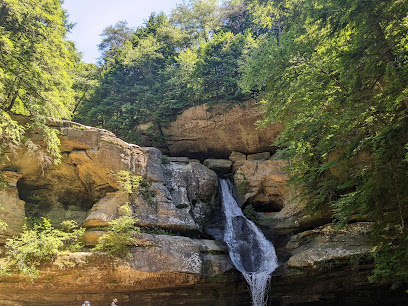
Big Muskie Bucket
Discover the monumental Big Muskie Bucket in McConnelsville, Ohio, a historic symbol of mining prowess and engineering marvel set in a picturesque park.
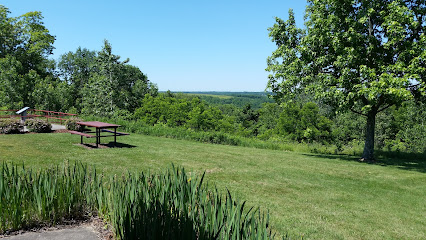
Newark Earthworks
Delve into the ancient history of the Newark Earthworks, a UNESCO World Heritage Site showcasing monumental mounds and Native American heritage.
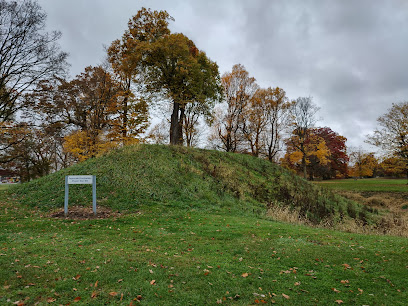
Zaleski State Forest
Explore Zaleski State Forest: Ohio's natural paradise with hiking, camping, and breathtaking scenery awaits your discovery.
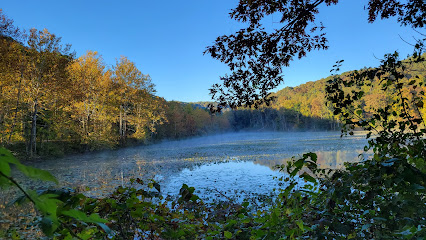
Essential places to dine
Millstone Southern Smoked BBQ
Experience authentic southern barbecue at Millstone Southern Smoked BBQ in Logan, Ohio - where every bite tells a story!
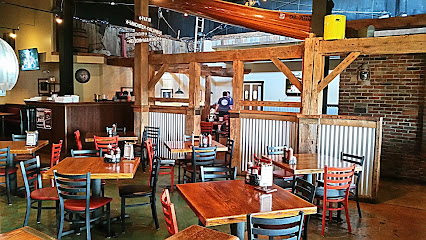
Olde Dutch
Discover authentic traditional American cuisine at Olde Dutch in Logan, Ohio – where hearty meals meet warm hospitality.
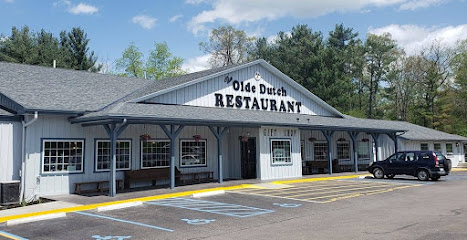
Hungry Buffalo
Experience the taste of America at Hungry Buffalo in Logan, Ohio - where comfort food meets warm hospitality.
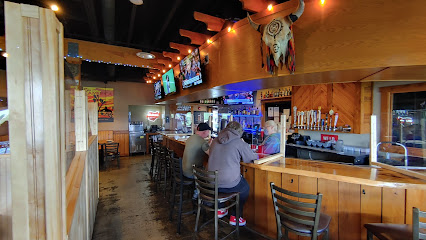
Bob Evans
Discover comfort food at Bob Evans in Logan, Ohio - your go-to family-friendly restaurant offering delicious breakfasts and homestyle meals.
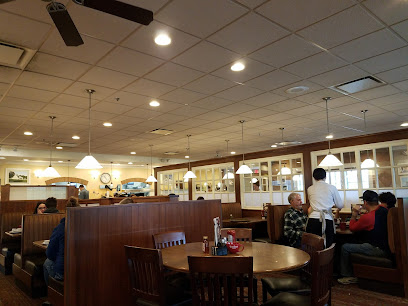
Hocking Hills Diner
Experience delightful breakfasts at Hocking Hills Diner - where delicious food meets warm hospitality in scenic Logan, Ohio.

Lake Hope Lodge
Experience mouthwatering barbecue delights at Lake Hope Lodge in Ohio – where delicious food meets breathtaking nature.
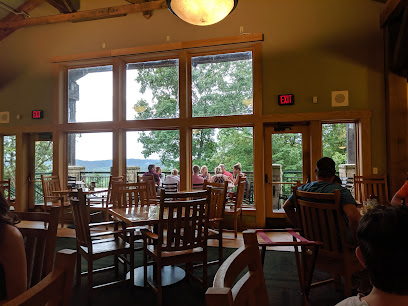
M & M Family Diner
Experience classic American comfort food at M & M Family Diner in Logan, Ohio—where every meal feels like home.

Jack's Steak House
Experience the best steaks in Hocking Hills at Jack's Steak House - where flavor meets comfort in Ohio's scenic backdrop.

Home Tavern
Experience delicious grilled dishes and vibrant sports atmosphere at Home Tavern in Logan, Ohio - your go-to spot for comfort food.
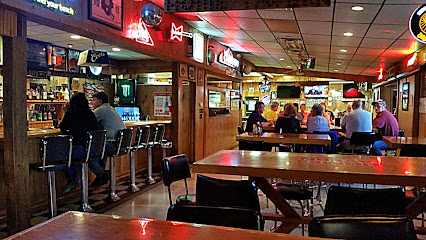
Los Mariachis
Discover the vibrant flavors of Mexico at Los Mariachis in Nelsonville - an affordable dining experience filled with authentic cuisine.
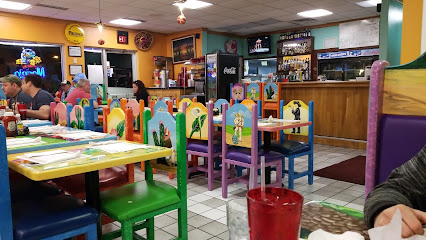
Tammy's Country Kitchen
Experience heartwarming American cuisine at Tammy's Country Kitchen in Nelsonville - perfect for families and breakfast lovers alike.

Dodson's On Broadway
Experience the taste of home-style cooking at Dodson's On Broadway in New Lexington - where delicious pizza meets traditional American favorites.
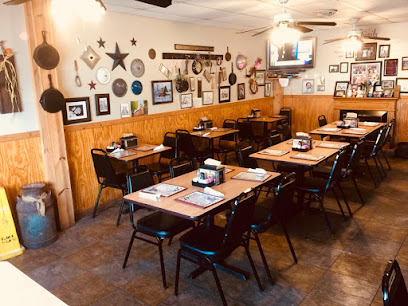
TheFeed
Discover TheFeed in Logan, Ohio – where hearty comfort food meets warm hospitality in a cozy setting.

Pearl's Diner
Experience classic American diner charm at Pearl's Diner in Logan, Ohio - where every meal is made with love and local ingredients.
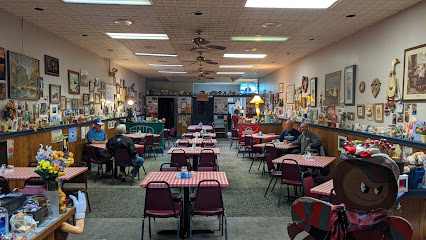
Clay Haus
Discover authentic German flavors at Clay Haus in Somerset, Ohio—where tradition meets taste in every bite.
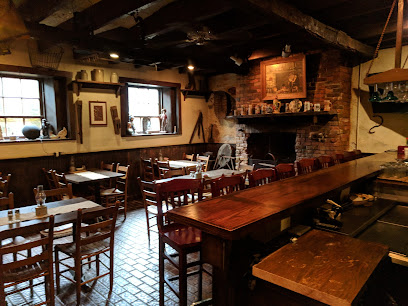
Markets, malls and hidden boutiques
Walmart Supercenter
Explore the convenience of Walmart Supercenter in Logan, Ohio, your ultimate shopping destination for essentials and souvenirs during your visit.

Hocking Hills Inn & Coffee Emporium
Experience the delightful blend of a cozy inn, a charming café, and a unique gift shop in the heart of Hocking Hills, Ohio.

Logan Antique Mall
Explore an enchanting treasure trove at Logan Antique Mall, where unique antiques and vintage collectibles await your discovery.
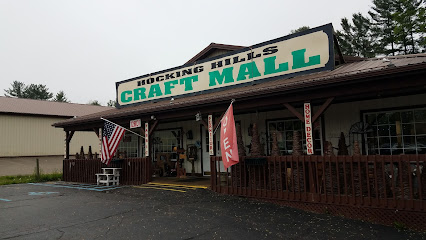
Olde Shoe Factory Antique Mall
Explore the Olde Shoe Factory Antique Mall in Lancaster, Ohio, where unique treasures and timeless antiques await every visitor.

Rocky Outdoor Gear Store
Discover top-quality boots and outdoor gear at the Rocky Outdoor Gear Store in Nelsonville, Ohio – your adventure starts here!

White's Mill
Discover unique local treasures at White's Mill, a historic gift shop blending artistry with rich heritage in Athens, Ohio.
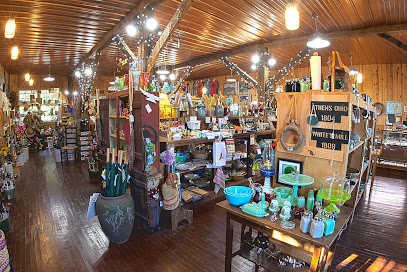
Shoppes at Athens
Explore the Shoppes at Athens, a vibrant shopping mall in Ohio, featuring diverse stores, delightful dining, and a welcoming atmosphere for all.

Peddler's Junction
Explore Peddler's Junction in Lancaster, Ohio, a vibrant marketplace for unique gifts, antiques, and local crafts, perfect for treasure hunters and culture enthusiasts.

Gemini's Eclectic Emporium
Explore Gemini's Eclectic Emporium in Zanesville, Ohio, for unique gifts, metaphysical supplies, and toys in a whimsical shopping experience.

New-To-You Thrift Shoppe
Uncover unique treasures and vintage finds at New-To-You Thrift Shoppe in Athens, Ohio, where every visit offers a new adventure.
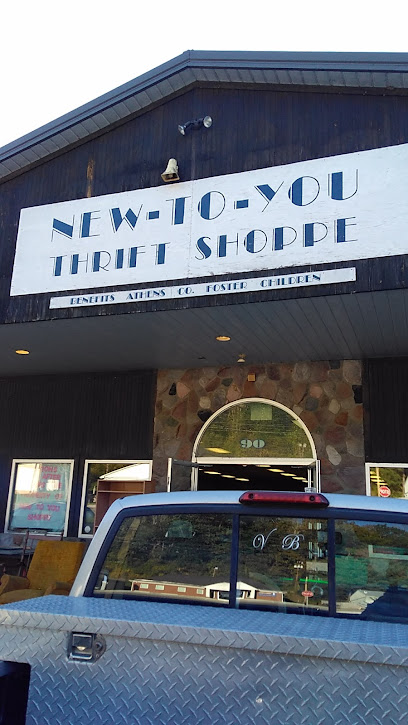
Rocky
Explore Rocky in Nelsonville, Ohio - Your ultimate destination for high-quality boots, sportswear, and Western apparel.

Crabtree's Logan Sales (LS)
Explore a diverse selection of hardware, tools, and home improvement supplies at Crabtree's Logan Sales while enjoying personalized service in Logan, Ohio.

Weaver's Market And Deli
Explore the authentic flavors of Logan, Ohio, at Weaver's Market And Deli - your destination for fresh, homemade meals and local specialties.

The Red Stable German Village Souvenirs & Gifts
Discover unique gifts and local treasures at The Red Stable in German Village, a charming gift shop filled with artisanal crafts and souvenirs.

UpCycle Ohio Thrift Store
Explore UpCycle Ohio Thrift Store for unique vintage finds and sustainable shopping in Athens, Ohio. Discover treasures that reflect local culture and creativity.

Essential bars & hidden hideouts
Home Tavern
Discover the heart of Logan, Ohio, at Home Tavern, where delicious American grill cuisine meets a cozy, welcoming atmosphere.
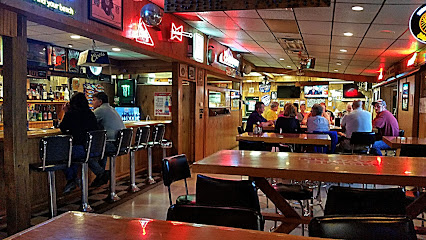
The Ugly Mug Bar & Grill
Experience the vibrant flavors of The Ugly Mug Bar & Grill in Canal Winchester, Ohio, where great food and a welcoming atmosphere await tourists.

Old Bill Bailey's
Experience the heart of Lancaster at Old Bill Bailey's – where delicious grill cuisine meets welcoming hospitality in a charming setting.

The Mine Tavern
Discover the charm of The Mine Tavern in Nelsonville, OH—where delicious grilled dishes meet warm hospitality in a historic setting.

Rushcreek Pub & Grub
Experience the heart of Bremen, Ohio, at Rushcreek Pub & Grub, where delicious comfort food meets a warm, family-friendly atmosphere.

Smiling Skull Saloon
Discover the lively atmosphere and eclectic charm of Smiling Skull Saloon in Athens, Ohio, where great drinks and live music await.

The Pigskin Bar and Grille
Savor the best of American cuisine at The Pigskin Bar and Grille in Athens, where flavor meets a friendly atmosphere.

The Max Bar & Grill
Experience the lively atmosphere of The Max Bar & Grill in Logan, Ohio - a perfect blend of delicious food, dance, and karaoke for all visitors.

Hunter Street Saloon
Delight in the culinary and musical offerings of Hunter Street Saloon, a lively grill and live music venue in Logan, Ohio.

Copper Penny Lakeside
Experience the perfect blend of delicious grill cuisine and stunning lake views at Copper Penny Lakeside, a must-visit destination for food lovers.
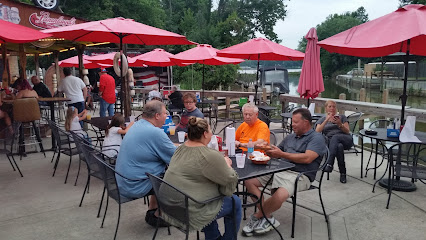
Barrel Bar
Experience the lively atmosphere of Barrel Bar by Buckeye Lake, where great drinks and entertainment meet friendly faces.

BAR LIQUID
Experience Newark's nightlife at Bar Liquid, where great drinks and a vibrant atmosphere come together for an unforgettable evening.

Shamrock Irish Pub
Discover the authentic taste of Ireland at Shamrock Irish Pub in Logan, Ohio, a cozy retreat for food and drink lovers alike.

Tony's Tavern
Experience the vibrant atmosphere and diverse drink selection at Tony's Tavern, a must-visit bar in Athens, Ohio.
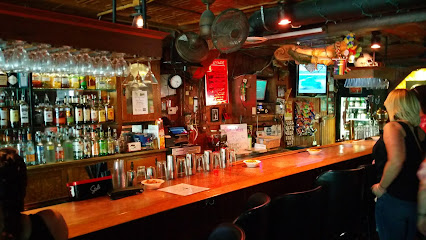
Trotter’s
Experience the vibrant atmosphere and delicious menu at Trotter’s, New Lexington's premier grill and sports bar for a memorable dining experience.

Local Phrases about Wayne National Forest
-
- HelloHowdy
[haw-dee] - GoodbyeSee ya
[see yah] - YesYep
[yep] - NoNah
[nah] - Please/You're welcomePlease/No problem
[pleez/no prob-lem] - Thank youThanks
[thanks] - Excuse me/SorryPardon me/My bad
[par-dun me/my bad] - How are you?How y'all doin'?
[how yall do-in] - Fine. And you?Fine. And you?
[fine. and yu] - Do you speak English?Ya speak English?
[ya speak ing-glish] - I don't understandI dunno
[I dun-no]
- HelloHowdy
-
- I'd like to see the menu, pleaseCan I see the menu?
[can eye see the men-yoo] - I don't eat meatI don't eat meat
[I dun eat meet] - Cheers!Cheers!
[cheers] - I would like to pay, pleaseCheck please
[chek pleez]
- I'd like to see the menu, pleaseCan I see the menu?
-
- Help!Help!
[help] - Go away!Git!
[git] - Call the Police!Call the cops!
[call the cops] - Call a doctor!Get a doc!
[get a doc] - I'm lostI'm lost
[im lost] - I'm illI'm sick
[im sick]
- Help!Help!
-
- I'd like to buy...I wanna buy...
[I wanna buy] - I'm just lookingJust lookin'
[just lookin] - How much is it?How much?
[how much] - That's too expensiveToo pricey
[too pry-see] - Can you lower the price?Can ya do a deal?
[can yu do a deal]
- I'd like to buy...I wanna buy...
-
- What time is it?What time is it?
[what time is it] - It's one o'clockIt's one
[its one] - Half past (10)Half past ten
[half past ten] - MorningMornin'
[mornin] - AfternoonAfternoon
[afternoon] - EveningEvenin'
[evenin] - YesterdayYesterday
[yesterday] - TodayToday
[today] - TomorrowTomorrow
[tomorrow] - 1One
[wun] - 2Two
[too] - 3Three
[three] - 4Four
[four] - 5Five
[five] - 6Six
[six] - 7Seven
[seven] - 8Eight
[ate] - 9Nine
[nine] - 10Ten
[ten]
- What time is it?What time is it?
-
- Where's a/the...?Where's the...?
[wheres the] - What's the address?What's the addy?
[whats the addy] - Can you show me (on the map)?Can ya show me (on the map)?
[can ya show me on the map] - When's the next (bus)?When's the next (bus)?
[whens the next bus] - A ticket (to ....)A ticket (to ....)
[a ticket to]
- Where's a/the...?Where's the...?
History of Wayne National Forest
-
Long before it became a national forest, the region we now know as Wayne National Forest was inhabited by various Indigenous tribes, including the Hopewell and Adena cultures. These ancient peoples left behind earthworks and mounds, some of which can still be seen today. These mounds served various purposes, including ceremonial and burial functions, and are a testament to the sophisticated societies that once thrived here.
-
The arrival of European settlers in the late 18th century marked a significant shift in the landscape and culture of the area. These settlers, primarily of Scots-Irish and German descent, began to clear the dense forests for agriculture and established small farming communities. The region's rich natural resources also attracted hunters, trappers, and later, loggers, which dramatically altered the ecosystem.
-
In 1787, the Ohio Company of Associates, a group of Revolutionary War veterans, purchased a vast tract of land in southeastern Ohio, including what is now Wayne National Forest. They established the city of Marietta, the first permanent settlement in the Northwest Territory, just north of the forest area. This settlement played a crucial role in the westward expansion of the United States.
-
During the 19th century, southeastern Ohio became a hub for iron production. Numerous iron furnaces were constructed in the region, including within the boundaries of present-day Wayne National Forest. These furnaces utilized the local timber for charcoal and extracted iron ore from the ground, leading to significant deforestation. Remnants of these iron furnaces, such as the Vesuvius Iron Furnace, can still be visited today.
-
The Great Depression of the 1930s brought profound changes to Wayne National Forest. The Civilian Conservation Corps (CCC), a New Deal program, was established to provide jobs and restore America's natural resources. The CCC planted millions of trees, built trails, and constructed recreational facilities in the area. Their work laid the foundation for the establishment of Wayne National Forest in 1951.
-
Wayne National Forest was officially established in 1951 to restore and manage the lands that had been severely degraded by deforestation and poor agricultural practices. Named after General 'Mad' Anthony Wayne, a Revolutionary War hero, the forest now covers over a quarter-million acres across multiple counties. It serves as a model of land reclamation and sustainable forest management.
-
Wayne National Forest is rich in cultural heritage, from its Native American roots to its role in the Underground Railroad. Several sites within the forest were used as stops for escaped slaves seeking freedom in the North. Today, visitors can explore these historic sites and gain a deeper understanding of the area's diverse cultural history.
Wayne National Forest Essentials
-
Wayne National Forest is located in southeastern Ohio, with major access points near the cities of Athens, Marietta, and Ironton. The nearest major airport is John Glenn Columbus International Airport (CMH) in Columbus, around 1.5 to 2 hours drive from most forest access points. From the airport, you can rent a car or take a bus to Athens. There are also smaller regional airports such as Mid-Ohio Valley Regional Airport (PKB) near Parkersburg, WV.
-
The best way to explore Wayne National Forest is by car. The forest spans over 240,000 acres and has multiple access points, making a personal or rental vehicle the most convenient option. Public transportation options within the forest are very limited. Biking and hiking are popular ways to explore the trails. For those without a car, local taxi services and rideshare apps like Uber and Lyft are available in nearby towns like Athens.
-
The official currency in the United States is the US Dollar (USD). Credit and debit cards are widely accepted in towns near Wayne National Forest, such as Athens and Marietta. However, it's advisable to carry cash for small purchases, especially when visiting remote areas of the forest where card payments may not be accepted. ATMs are available in nearby towns but may be scarce within the forest itself.
-
Wayne National Forest is generally safe for tourists. However, it's crucial to take standard precautions such as informing someone about your hiking routes and expected return times. Carry a map, compass, or GPS device as cell service can be unreliable in some areas. As for crime, the surrounding towns like Athens and Marietta are generally safe but always stay vigilant, especially at night. Avoid isolated areas and keep your belongings secure.
-
In case of emergency, dial 911 for immediate assistance. Be prepared to provide your location as precisely as possible. The Wayne National Forest is patrolled by Forest Service law enforcement officers, and local medical facilities are available in nearby towns such as Athens, Marietta, and Ironton. Always carry a first-aid kit and emergency contact information. It is also recommended to have travel insurance that covers medical emergencies.
-
Fashion: Do wear comfortable, weather-appropriate clothing and sturdy hiking boots. Avoid wearing strong perfumes as they can attract insects. Religion: While the forest is not a religious site, respect local customs and traditions in nearby towns. Public Transport: Do plan your route in advance as public transport is limited. Don't expect regular bus services within the forest. Greetings: Do greet locals with a friendly 'hello' or a wave. Eating & Drinking: Do bring your own food and water, especially for long hikes. Don't litter; always carry out what you carry in.
-
To experience Wayne National Forest like a local, visit during the fall when the foliage is breathtakingly beautiful. Participate in local events and festivals in nearby towns like the Athens International Film and Video Festival or the Ohio Pawpaw Festival. Engage with local rangers for insider tips on the best trails and hidden spots. Don't miss the historic Moonville Tunnel and the serene Burr Oak Lake.
Trending Landmarks in Wayne National Forest
-
Hocking Hills State Park
-
Hocking Hills State Park Visitor Center
-
Rock House
-
Conkles Hollow State Nature Preserve
-
Blackhand Gorge State Nature Preserve
-
Cantwell Cliffs
-
Cedar Falls
-
Newark Earthworks
-
Moonville Tunnel
-
Rockbridge State Nature Preserve
-
Flint Ridge State Memorial
-
Wayne National Forest Headquarters & Athens Ranger Station
-
Paul A. Johnson Pencil Sharpener Museum
-
Wildcat Hollow Hiking Trail - Wayne National Forest
-
Sherman House Museum
Nearby Cities to Wayne National Forest
-
Things To Do in Parkersburg
-
Things To Do in Marietta
-
Things To Do in Chillicothe
-
Things To Do in Columbus
-
Things To Do in Mansfield
-
Things To Do in Wheeling
-
Things To Do in Wooster
-
Things To Do in Wilmington
-
Things To Do in Charleston
-
Things To Do in Springfield
-
Things To Do in Canton
-
Things To Do in Clarksburg
-
Things To Do in Weirton
-
Things To Do in Dayton
-
Things To Do in Fairmont

